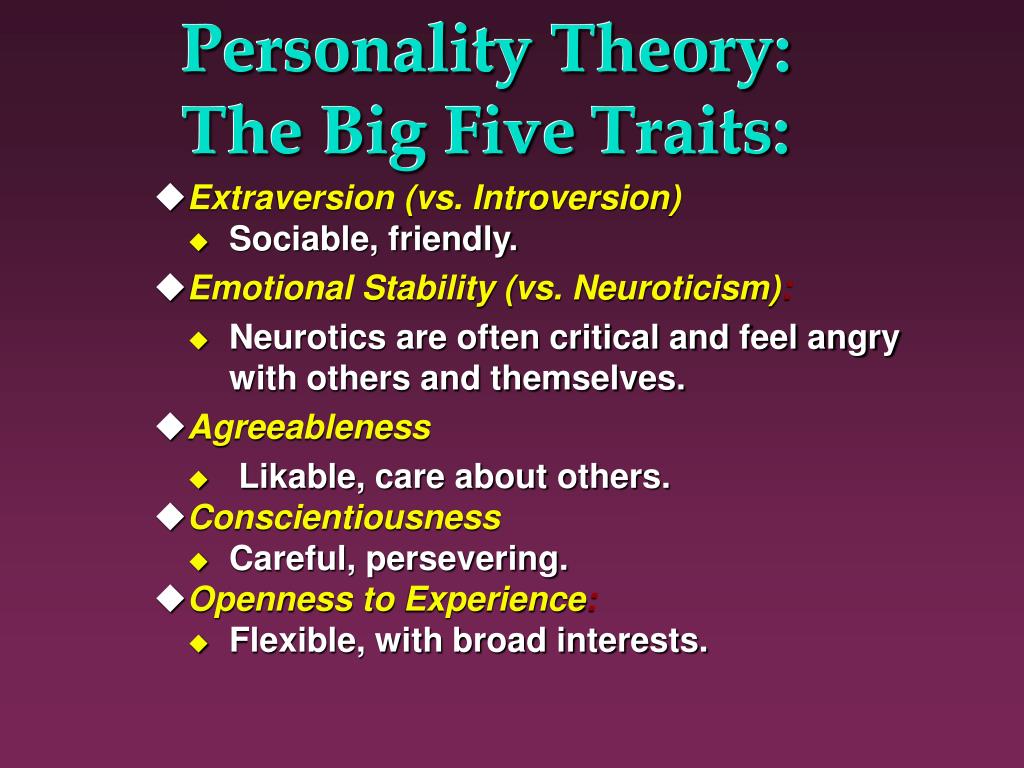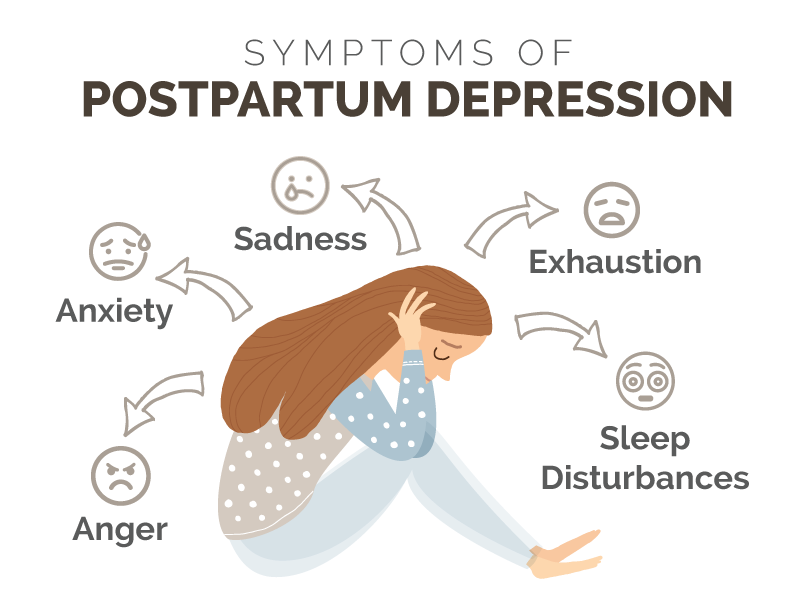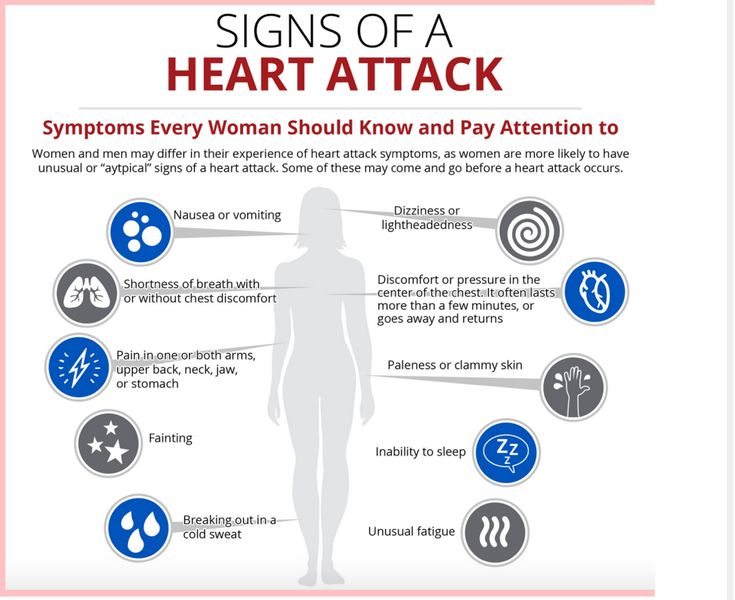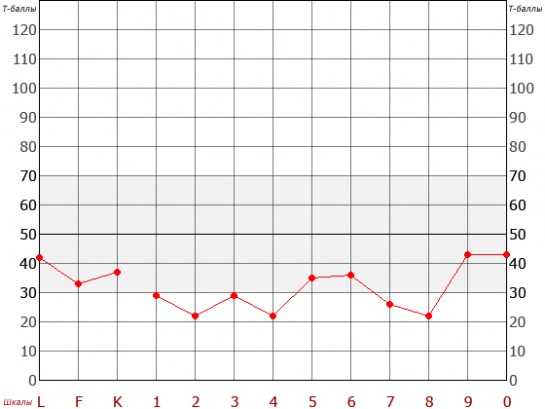Big 5 personality dimension
Decoding "The Big Five" Dimensions
Think about your friends and coworkers for a minute: What qualities do they have that you like and dislike? Which qualities mesh well with your personality and which do not? We are surrounded by people who are like us and some who are just our total opposite. Sometimes it works, sometimes it doesn't. Relationships take effort to maintain. To know yourself and to know others' tendencies are great ways to accomplish goals and maintain a high level of satisfaction both personally and in the workplace.
Defining Personality and Traits
Personality is the set of characteristics that underlie a relatively stable pattern of behavior in response to ideas, people, and objects. Traits are distinguishing personal characteristics that make up an individual's unique personality.
What is "The Big Five"?
For many years, researchers have built theories that explain and classify the complex topic of human personality, motivation, and behavior. Gordon Allport's Trait Theory of Personality, Raymond Cattell's 16 Personality Factor Model, and Carl Jung’s Personality Theories are some examples.
Researchers and psychologists suggest that most personality tests have recurring themes/dimensions known as "The Big Five.” The Big Five personality dimensions by Robert McCrae and Paul Costa were built upon Lewis Goldberg's five primary personality factors. In their research, they classified traits into five broad dimensions: openness, conscientiousness, extraversion, agreeableness, and neuroticism. You can remember them by using the acronyms OCEAN or CANOE.
Openness - Describes an individual's openness to experience. A high score of this trait is great in a fast-growing company where there are many changes and ambiguity. The mid scorers tend to be great as well as they are usually open-minded but also practical and level-headed. Pay attention to the very low end of the spectrum as individuals who scored low may be resistant to change and can hinder innovation and progress.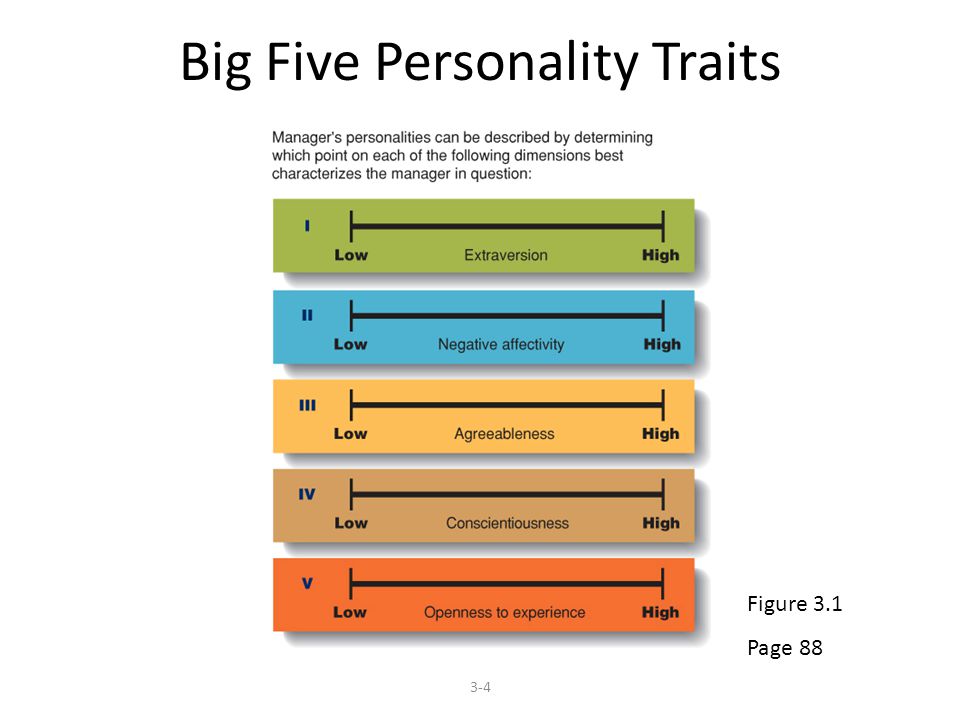
high - inquisitive, creative, curious, unconventional, imaginative, likes to take on new challenges, adventurous
medium - open to change but also appreciates tried-and-true methods
low - straightforward, prefers familiarity, may not express emotions openly, down to earth
Conscientiousness - The degree to which a person is characterized by dependability, efficiency, and purposeful action. This dimension is a good predictor of successful individual performance in the workplace.
high - organized, likes routine and plans, disciplined, goal-oriented, thorough, methodical, detail-oriented, can be a compulsive perfectionist
medium - prefers structure but can be flexible, cares about details and accuracy if he or she finds the situation important
low - spontaneous, flexible, more relaxed, multitasker, tends to be careless, may procrastinate
Extraversion - Refers to a person's comfort level with his or her environment.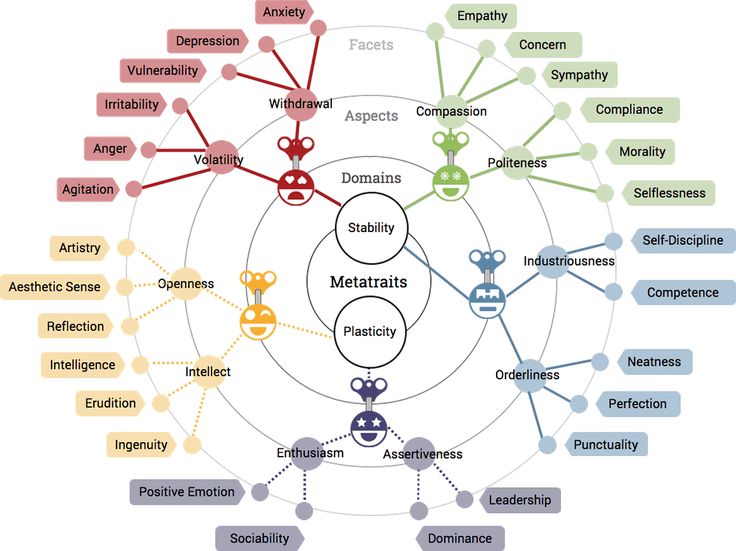 A person high in extraversion is usually comfortable talking with new people. He or she likes to look at the big picture and is a successful influencer. This trait is usually seen in many CEOs and entrepreneurs.
A person high in extraversion is usually comfortable talking with new people. He or she likes to look at the big picture and is a successful influencer. This trait is usually seen in many CEOs and entrepreneurs.
high - action-oriented, risk-taker, energetic, assertive, outgoing
medium - can easily shift from working in a team to independently
low - task-oriented, reserved, relaxed pace, likes to keep to themselves, quiet, private
Agreeableness - Measures how well a person gets along with others, competitiveness, and cooperation. People who scored high in this spectrum are empathetic and work well in a team. Highly agreeable individuals may thrive in roles that may involve counseling, social work, and leadership. On the negative side, a highly agreeable person may conform to groups, perhaps to avoid disagreements and/or to fit in. A mid scorer will likely bring up hard topics and be more assertive in situations that require decision-making.
high - dislikes confrontation, compassionate, helpful, considerate, tolerant, and selfless
medium - looks out for both self and others, strategic, can be assertive if he/she strongly believes in a cause
low - guarded, makes objective judgments, direct communication style, may be self-focused, persistent, doubtful, uncooperative, may be combative
Neuroticism - Measures a person's emotional stability.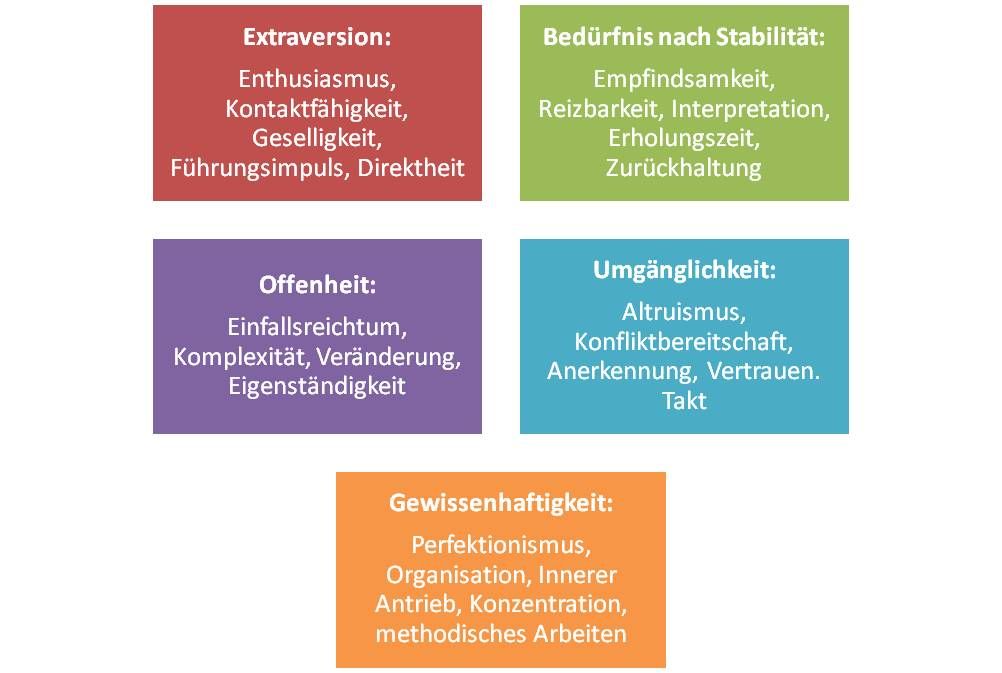 High neuroticism can lead to issues in the workplace. But just because an individual scored high in neuroticism, doesn't mean they should be disregarded completely. The concern is more about the type of job that he or she will be performing. For example, a person who scored high in neuroticism may not do well working as a server in a busy restaurant but may thrive working in a quiet, slower-paced setting such as in a library. Some people who get easily stressed handle their stress well and use it as a motivator to get their tasks accomplished.
High neuroticism can lead to issues in the workplace. But just because an individual scored high in neuroticism, doesn't mean they should be disregarded completely. The concern is more about the type of job that he or she will be performing. For example, a person who scored high in neuroticism may not do well working as a server in a busy restaurant but may thrive working in a quiet, slower-paced setting such as in a library. Some people who get easily stressed handle their stress well and use it as a motivator to get their tasks accomplished.
high - emotionally reactive, temperamental, insecure, tends to stress out easily, self-conscious, can be a perfectionist
medium - usually able to handle and control emotions under normal stress
low - calm, poised, relaxed, can handle stressful situations well
What are the benefits of taking personality tests?
- Self-reflection and increase self-awareness
- Assess your strengths and weaknesses
- Identify career possibilities
- Identify what focus you want to pursue in college
Why do personality tests matter in the workplace?
- Job placement
- Employee development and career planning
- Culture fit
- Employee satisfaction and motivation
- Reduce turnover and lower the cost of poorly-matched hires
- Helps us learn to understand our team members
Understanding yourself and those around you, especially your coworkers, is crucial to achieving goals and ramping up your productivity.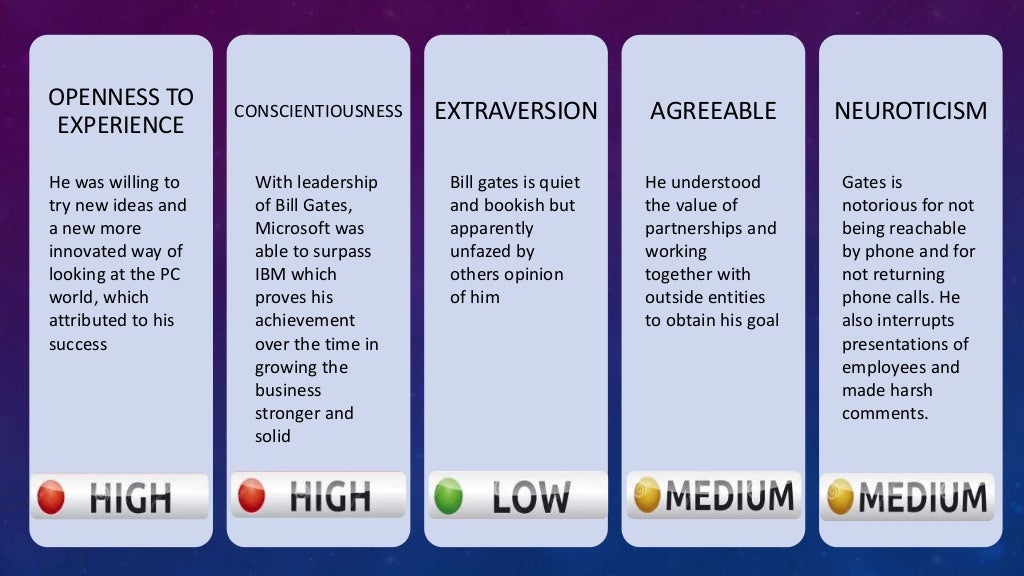 Here are some free personality tests to help you get started:
Here are some free personality tests to help you get started:
- 123Test
- Personality Assessor
- Openpsychometrics
- My Personality Test
Do you want to know more about Management By Strengths? Equiscript patient enrollment specialist and MBS trainer, Tekoa Christopher, has provided us with an overview. Check it out here!
Gladys Osea, Human Resources and Finance Analyst
Gladys Osea is an HR and Finance Analyst at Equiscript. Gladys performs a variety of HR functions and assists in the development of projects in the Finance and Accounting department. Her interests include personal finance, health and wellness, and self improvement. In her spare time, Gladys loves to read and catch up on her tv shows.
What Are The Big 5 Personality Traits?
Many modern and traditional studies in psychology point to 5 basic dimensions of personality. Evidence of this theory has grown over the years with the principle theory emerging in 1949.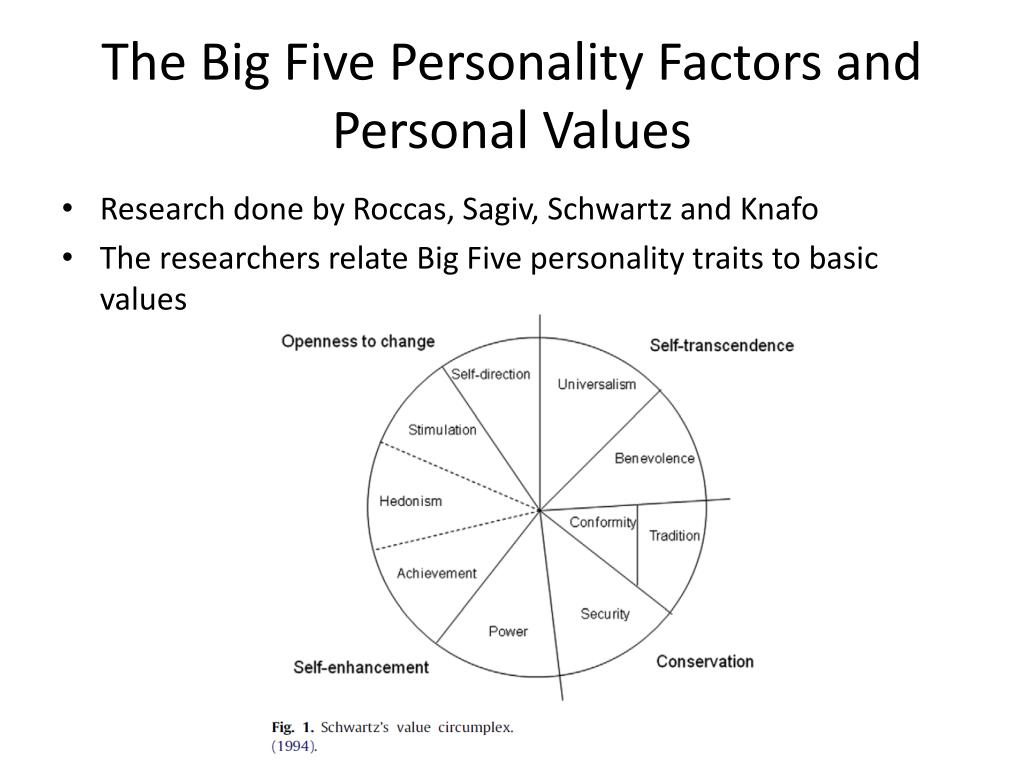 The five broad personality traits described by the theory are extraversion (also often spelled extroversion), agreeableness, openness, conscientiousness, and neuroticism.
The five broad personality traits described by the theory are extraversion (also often spelled extroversion), agreeableness, openness, conscientiousness, and neuroticism.
The five basic personality traits is a theory developed in 1949 by D. W. Fiske (1949) and later expanded upon by other researchers including Norman (1967), Smith (1967), Goldberg (1981), and McCrae & Costa (1987).
Researchers had spent years before trying to pin down character traits as a way of analysing people’s behaviour. At one point, Gordon Allport found over 4000 traits. Even when this was reduced to 16 it was seen as too complicated. This is where the five big personality traits began.
These broad categories have been researched and developed over the years and, whilst there is extensive study into each area, researchers don’t always agree on the definition of each characteristic.
What are the big five personality traits?
Openness
Openness is a characteristic that includes imagination and insight. The world, other people and an eagerness to learn and experience new things is particularly high for this personality trait. It leads to having a broad range of interests and being more adventurous when it comes to decision making.
Creativity also plays a big part in the openness trait; this leads to a greater comfort zone when it comes to abstract and lateral thinking.
Think of that person who’s always ordering the most exotic thing on the menu, going to different places and having interests which you would never have thought of… that is someone who has a high openness trait.
Anyone low in this trait tends to be viewed with more traditional approaches to life and may struggle when it comes to problem solving outside their comfort zone of knowledge.
Conscientiousness
Conscientiousness is a trait that includes high levels of thoughtfulness, good impulse control, and goal-directed behaviours.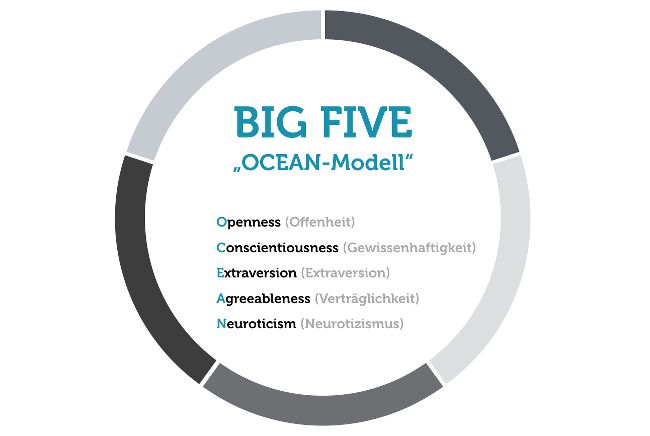 This organised and structured approach is often found within people who work in science and even high-retail finance where detail orientation and organisation are required as a skill set.
This organised and structured approach is often found within people who work in science and even high-retail finance where detail orientation and organisation are required as a skill set.
A highly conscientious person will regularly plan ahead and analyse their own behaviour to see how it affects others. Project management teams and HR departments regularly have highly conscientious people working in their teams to help balance out the structural roles within the overall team development.
A good example of a conscientious person would be someone you know who is always planning ahead for the next time you meet - and in the meantime, regularly staying in contact, checking in on your wellbeing. They like to organise around certain dates and events and are focused on you when you meet.
People low in conscientiousness tend to dislike structure and schedules, procrastinate on important tasks and fail to complete tasks as well.
Extraversion
Extraversion (sometimes referred to as Extroversion) is a trait that many will have come across in their own lives.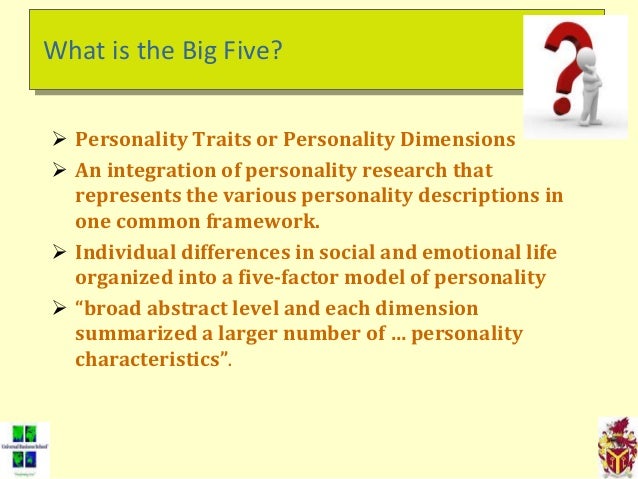 It’s easily identifiable and widely recognisable as “someone who gets energised in the company of others.”
It’s easily identifiable and widely recognisable as “someone who gets energised in the company of others.”
This, amongst other traits which include, talkativeness, assertiveness and high amounts of emotional expressiveness, have made extraverted people widely recognisable over many years of social interaction.
We all have that one friend or family member - or several - who aren’t exactly wall flowers in a social interaction. They thrive on being the centre of attention, enjoy meeting new people and somehow tend to have the biggest friends and acquaintance group you have known.
The opposite is, of course, someone else in our lives we may know, an introvert. They prefer solitude and have less energy in social situations. Being at the centre of attention or making small talk can be quite taxing.
Extroverts tend to have very public facing roles including areas such as sales, marketing, teaching and politics. Seen as leaders, extroverted people will be more likely to lead than stand in the crowd and be seen to not be doing anything.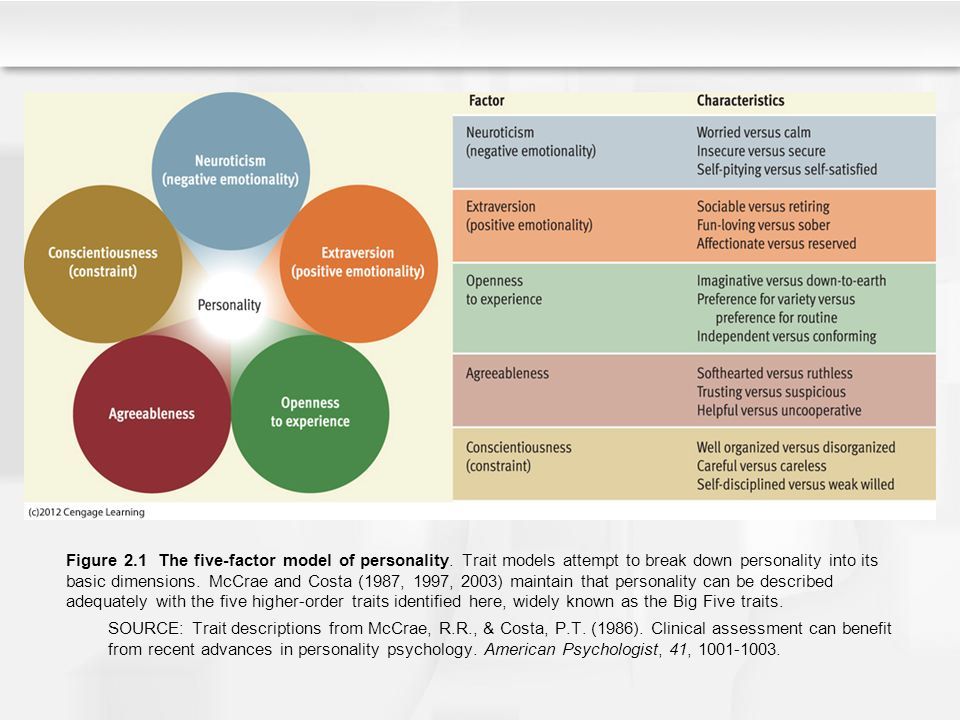
Agreeableness
People who exhibit high agreeableness will show signs of trust, altruism, kindness, and affection. Highly agreeable people tend to have high prosocial behaviours which means that they’re more inclined to be helping other people.
Sharing, comforting and cooperating are traits that lend themselves to highly agreeable personality types. Empathy towards others is commonly understood as another form of agreeableness even if the term doesn’t quite fit.
The opposite to agreeableness is disagreeableness but it manifests in behaviour traits that are socially unpleasant. Manipulation and nastiness towards others, a lack of caring or sympathy, a lack of taking interest in others and their problems are all quite common.
Agreeable people tend to find careers in areas where they can help the most. Charity workers, medicine, mental health and even those who volunteer in soup kitchens and dedicate time to the third sector (social studies) are high in the agreeableness chart.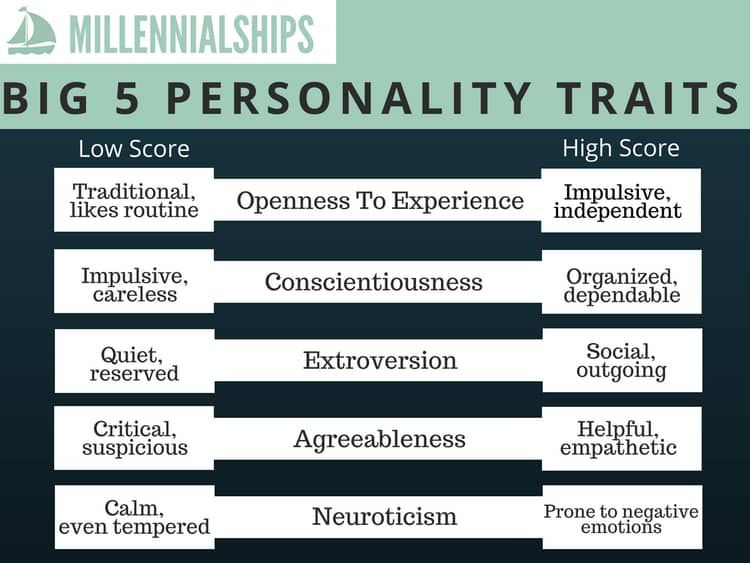
Neuroticism
Neuroticism is characterised by sadness, moodiness, and emotional instability. Often mistaken for anti-social behaviour, or worse a greater psychological issue, neuroticism is a physical and emotional response to stress and perceived threats in someone’s daily life.
Individuals who exhibit high levels of neuroticism will tend to experience mood swings, anxiety and irritability. Some individuals who experience sudden changes in character from a day-to-day perspective could be highly neurotic and respond to high stress levels in their work and personal lives.
Anxiety, which plays a large part in the makeup of neuroticism, is about an individual's ability to cope with stress and perceived or actual risk. People who suffer with neuroticism will overthink a lot of situations and find difficulty in relaxing even in their own space.
Of course, those who rank lower on the neurotic level will exhibit a more stable and emotionally resilient attitude to stress and situations.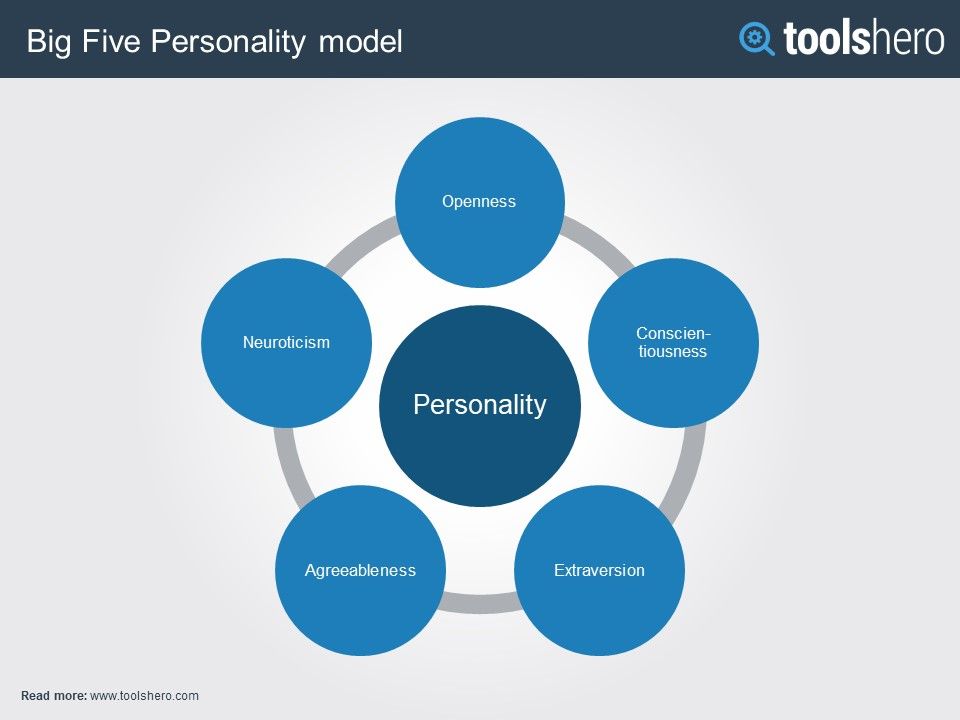 Low neurotic sufferers also rarely feel sad or depressed, taking the time to focus on the present moment and not get involved in mental arithmetic on possible stress-inducing factors.
Low neurotic sufferers also rarely feel sad or depressed, taking the time to focus on the present moment and not get involved in mental arithmetic on possible stress-inducing factors.
Who developed the big 5 personality traits?
Originally developed in 1949, the big 5 personality traits is a theory established by D. W. Fiske and later expanded upon by other researchers including Norman (1967), Smith (1967), Goldberg (1981), and McCrae & Costa (1987).
It’s suggested that as early the late 19th century social psychologists were trying to gain a more scientific understanding of personality but it wasn’t until the first official study in the 1930s by Gordon Allport and Henry Odbert that personality had some sort of scientific acknowledgement. They took 18,000 words from Webster’s Dictionary to describe personality traits and found adjectives that described non-physical characteristics creating a 4500 word bank of observable behaviour markers.
Later studies were able to identify many overlaps and specific traits per person which has allowed a more condensed and comprehensive review of personality traits.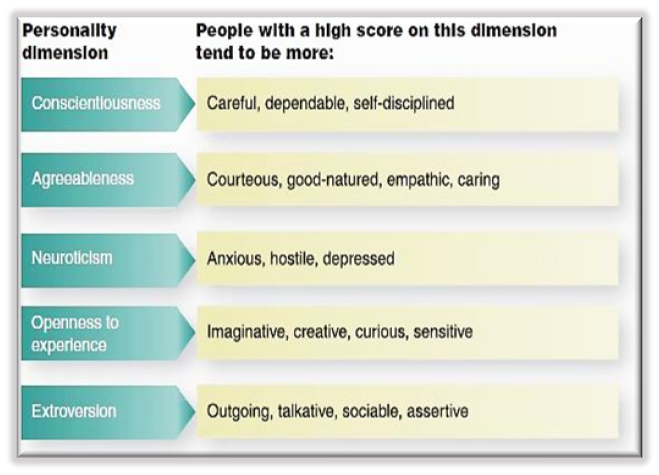 The big 5 are still widely used today as the basis of global study.
The big 5 are still widely used today as the basis of global study.
Why are the big 5 personality traits important?
When thinking about the big 5 personality traits, hiring managers, CEOs and even the candidates are wise to think about why they are important when it comes to joining a team. Before we go into the reasons why they are important, let’s quickly remind ourselves of what they are.
The five broad personality traits described by the theory are extraversion (also often spelled extroversion), agreeableness, openness, conscientiousness, and neuroticism.
The five basic personality traits is a theory coined in 1949 by D. W. Fiske (1949) and later expanded upon by other researchers including Norman (1967), Smith (1967), Goldberg (1981), and McCrae & Costa (1987).
So, why are they important when it comes to candidate selection?
The big 5 personality traits help us to not only better understand how they compare to others and to put names to their characteristics, it’s also used to explore relationships between personality and many other life indicators.
Think about knowing how agreeable your personality is and what this means to co-worker relationships? Or how neuroticism may have an impact on work-life balance? Overall, however, we can begin to break down why they’re important in different areas such as;
Understand employee relationships
How will people get along? Are you building a team where communication or trust may be stifled or open? Will you have a member of the team who can relate to others and be conscientious with others?
More effective team building and management
High five tendencies in openness, agreeableness and even extroversion can lead to better team management and team building. Someone who exhibits high agreeableness for example is capable of being cooperative, trustworthy and straightforward, making them easy to work with but also, showing the necessary skills for effective team management.
Understand employee motivations
Low five tendencies in something like extroversion can be difficult for understanding employee motivations.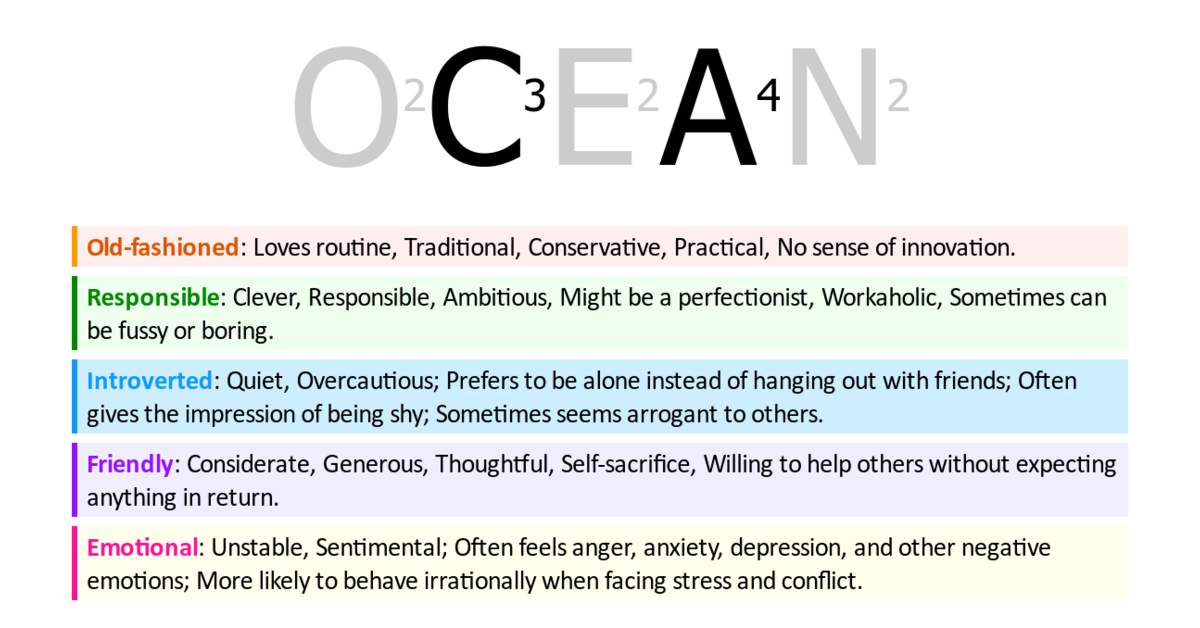 Whilst having a high-five tendency in agreeableness which encompasses empathy, makes it easier to get to the root causes of motivations and even gain a better understanding of people generally.
Whilst having a high-five tendency in agreeableness which encompasses empathy, makes it easier to get to the root causes of motivations and even gain a better understanding of people generally.
Build diverse teams
Something such as high-openness where embracing differences and embracing challenges can lead to more openness about who is hired, and finding solutions in different ways and areas. Whilst a team made up of mostly conscientious individuals is a team formation with the highest chance of being successful.
These teams will often display a good work ethic, produce high-quality work and be cooperative. This in return will lead to more solutions being put forward about who is required and where diverse teams can be built over time to help answer these problems.
Optimise interactions and communication
Again, something like high extroversion personality traits would be essential in developing interactions whilst being highly agreeable is better suited to open communications.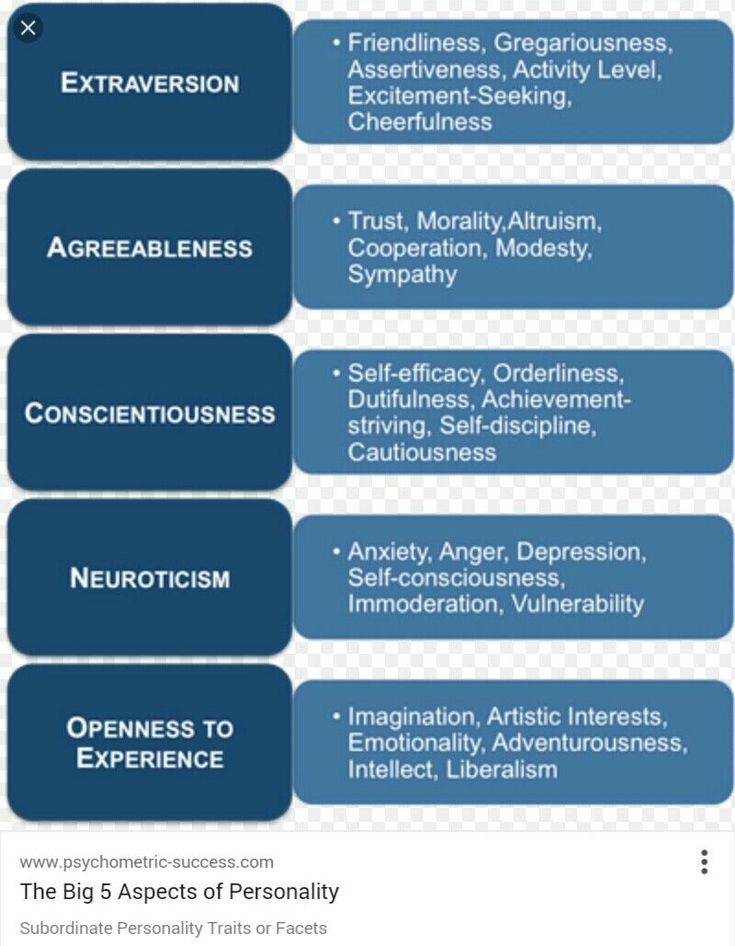
What factors influence the big 5 traits?
From nature and nurture to age and maturation, the big 5 traits have been widely studied where we can see what influences their impact on a person’s behaviour and character.
Personality has often been hypothesised as a question of nurture or nature. One particular study looked at 123 pairs of identical twins and 127 pairs of fraternal twins. “The findings suggested that the heritability of each trait was 53 percent for extraversion, 41 percent for agreeableness, 44 percent for conscientiousness, 41 percent for neuroticism, and 61 percent for openness.”
It has also been widely recognised that the older we get, the more our behaviour traits will change. We become less extraverted, less neurotic, and less open to new experiences whilst our agreeableness and conscientiousness will grow as we get older.
Do men and women differ with the big 5 traits?
The general consensus is that men and women are actually more alike than what normative social science would have us believe.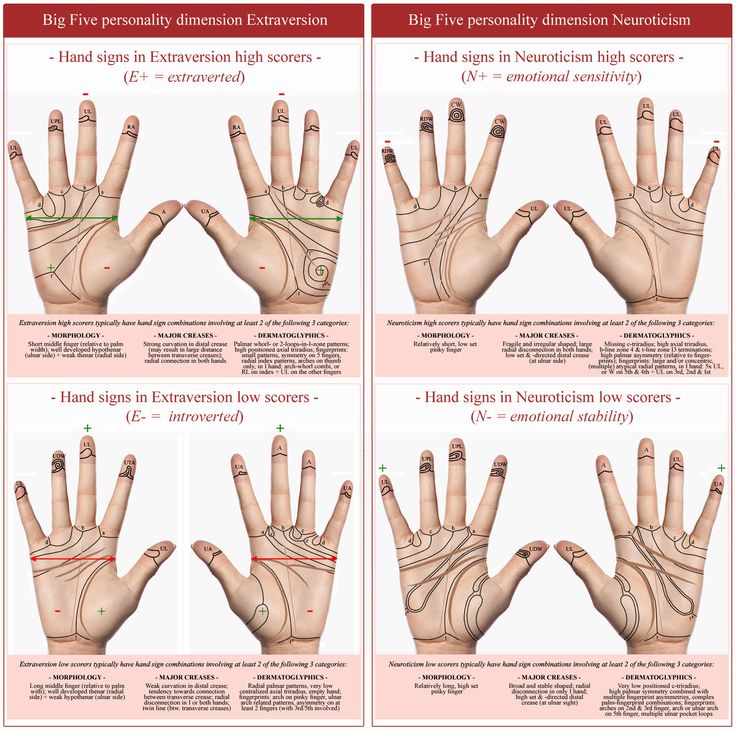 But as the title would suggest, there are some exceptions.
But as the title would suggest, there are some exceptions.
Weinsberg and DeYoung in 2011 studied the big 5 traits and in particular Gender Differences in Personality across the Ten Aspects of the Big Five. They concluded that women tend to score higher on Extraversion, Agreeableness, and Neuroticism than men.
Other studies have concluded that whilst the differences may be present, some traits are not extensively separate. Getting older will tend to align behaviour traits such as agreeableness and extraversion where both genders tend to score lower as time moves on.
Which big 5 personality types make the best leaders?
If you’re looking to build a great leader, then you need to consider the importance of the big 5 model as it will give you all the tools you need to understand where the leaders in your organisation may secretly be hiding.
For example, you may think that an extrovert may be a good leader. Although extraverts tend to show good leadership skills, be sociable and encourage discussions, research has suggested that too many extroverts in a team can actually cause a decrease in effectiveness.
Whilst extroversion is typically the strongest characteristic, followed by conscientiousness, openness to experience, neuroticism and finally agreeableness being the least common, you want to think about what makes a good leader.
For example, conscientiousness, or self-discipline, is one of the most important factors in a leader, particularly under stressful situations when responsibility and reliability is pertinent.
What you get with a conscientious leader is someone who is diligent over individual tasks, and will stay with them until completed and therefore, trust is put in their direction as someone who is reliable. Something like being a reliable individual is also closely related to intelligence on the matter at hand. While there may be many other forms of intelligence that the individual may lack, knowledge about the relevant situation is key.
Openness to experience is important when leading a team. Leaders will find themselves in situations that are out of their hands, a constantly evolving situation where if there is an unexpected issue or there is something coming down the pipeline, their ability to take executive decisions is only a positive.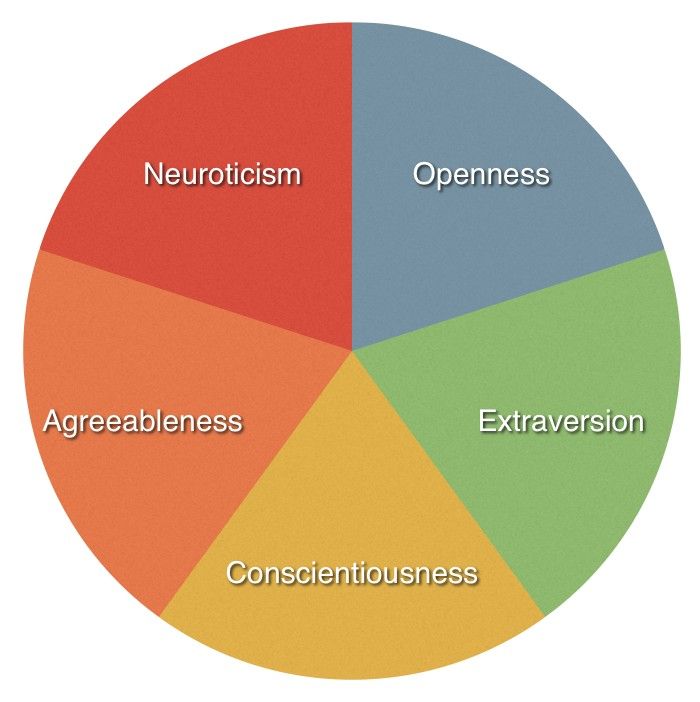 There is also a level of creativity that comes with openness and in difficult situations or confusing times, a resourceful leader - usually high in openness is a benefit.
There is also a level of creativity that comes with openness and in difficult situations or confusing times, a resourceful leader - usually high in openness is a benefit.
The two of the big 5 least attractive to leadership roles are neuroticism and agreeableness. The former will find teams being led by someone unsure of the decisions being made and potentially worse, being scared about the decision being made so no decision is made at all. The latter may have more people skills but that doesn’t mean that they have leadership traits. They may find themselves pleasing people rather than actually keeping the task in mind.
One of the key components to all of this however is that the Big 5 is not definitive and does not mean leaders can be predicted based on personality types. Other factors are far more important to appointing and training leaders, but this is a helpful exercise for those looking to reach leadership positions.
Big 5 personality traits tests
We can successfully measure personality traits with different tools and techniques.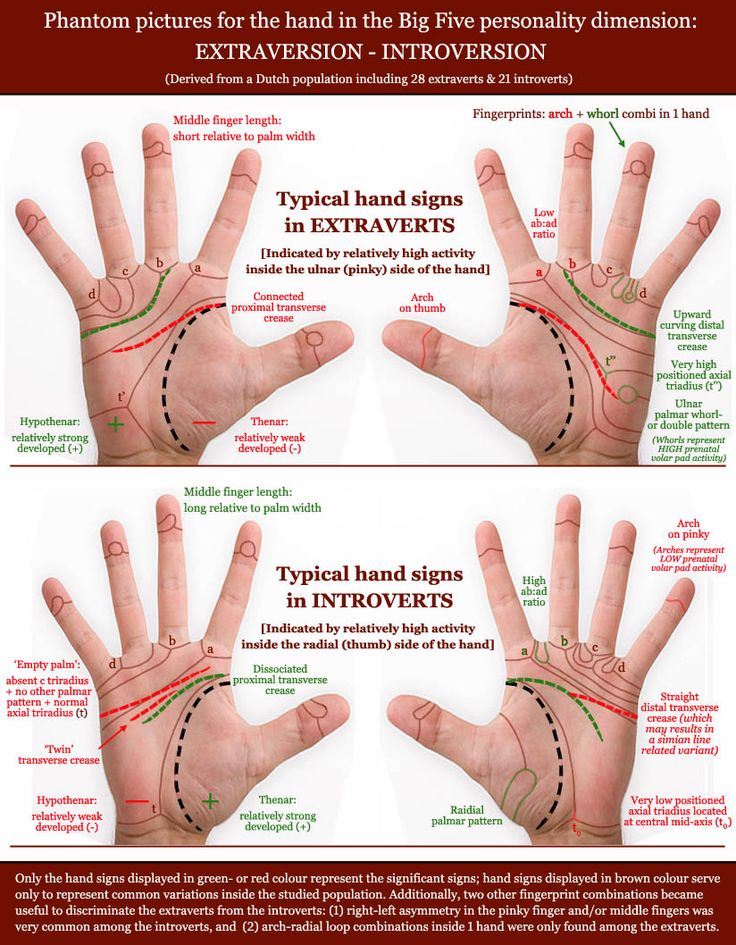 All in all, these tests are trying to discover how much your behaviour varies from high to low in the five traits which include; Openness, Conscientiousness, Extraversion, Agreeableness and Neuroticism.
All in all, these tests are trying to discover how much your behaviour varies from high to low in the five traits which include; Openness, Conscientiousness, Extraversion, Agreeableness and Neuroticism.
How are the traits measured?
Traditionally, a big 5 personality test is taken with a questionnaire and a multiple choice response.
For example, these questions will ask how much a person agrees or disagrees that he or she is someone who exemplifies various specific statements, such as:
- “Is open to trying new experiences” (for openness, or open-mindedness)
- “Is always thinking about others” (for conscientiousness)
- “Is the centre of attention at a party” (for extroversion)
- “Is trusting of others” (for agreeableness)
- “Is anxious about the future all the time” (for neuroticism, or negative emotionality)
The responses, Strongly agree to Strongly Disagree (with alternatives in between) will determine to what scale the person may be grouped into different personality traits.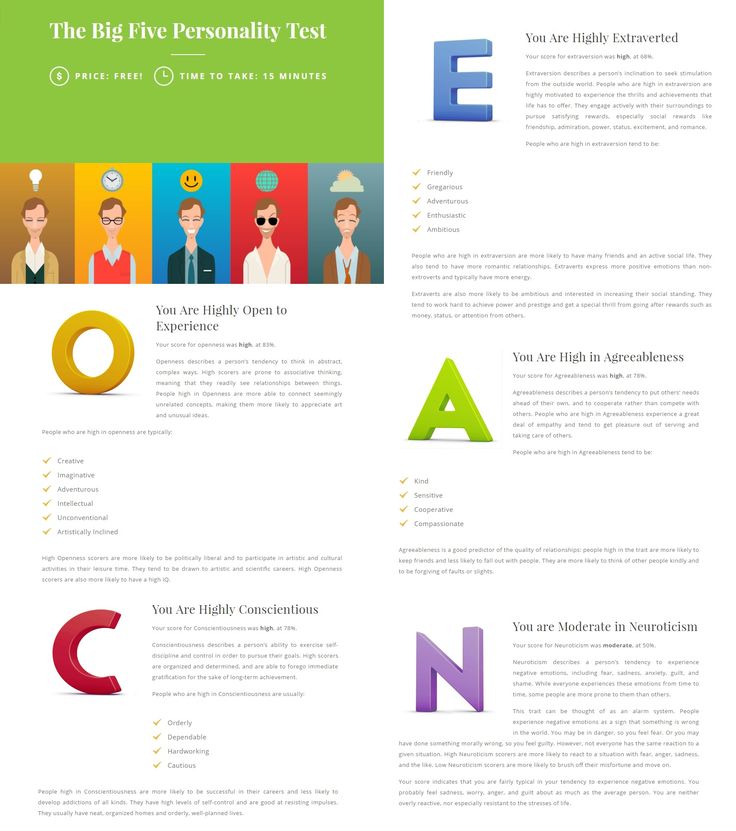
Are big five personality tests reliable?
Assessments based on the big 5 personality tests are very reliable, provided that sufficient research has been carried out and substantiated.
It is, to date, the most scientifically validated and reliable psychological model to measure personality. It is used to help predict behaviour as well as personality.
It remains a dependable model that businesses and scientific studies have been able to use consistently over a long period of time in helping to create new models, which predict someone’s behaviour at work, response to stressful situations and even understanding aspects of recorded social studies.
How do the big five personality traits predict behaviour at work?
When hiring employees (or testing current ones), the big 5 personality traits help us understand behaviour in the workplace and accurately predict, in many cases, future performance. Each personality type will have an impact within the working environment and amongst other staff.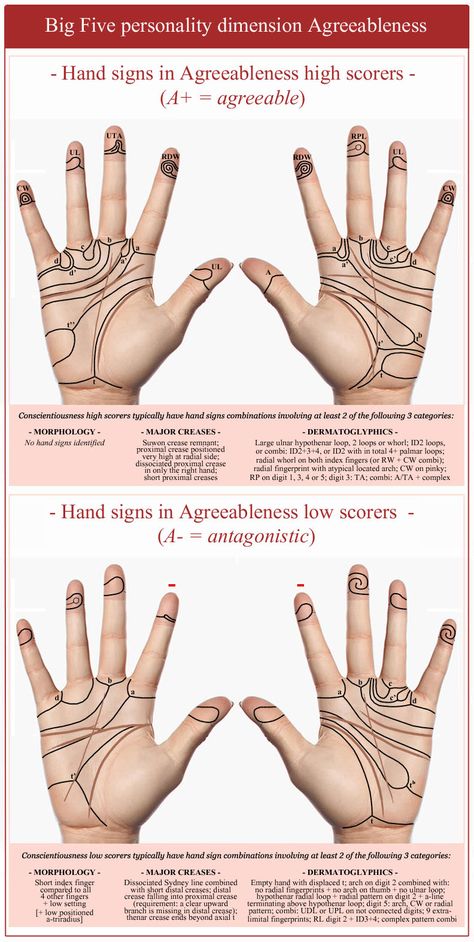 Being able to identify where there could be a positive or negative impact can help influence decisions around hiring or retaining staff.
Being able to identify where there could be a positive or negative impact can help influence decisions around hiring or retaining staff.
A candidate with a high openness score would be willing to learn new skills and tools. Presented with more abstract problems, they are more likely to think of abstract solutions and would be focused on tackling new problems that were perhaps previously overlooked.
Candidates with a high conscientiousness score wouldn’t necessarily be sat at their desk until midnight every evening! They would however be keen to get their work done, meet deadlines and be a self-starter; requiring little hand-holding to get the task done. Someone scoring low on the other hand, would need a lot more focus, time and attention to the task at hand.
The ideal extraversion scores would depend on the role you’re hiring for. Seen by many to be leaders in a team, a high extraversion score would do well in environments where they thrive off interaction with others:; sales, marketing & PR all require a level of people- facing skills.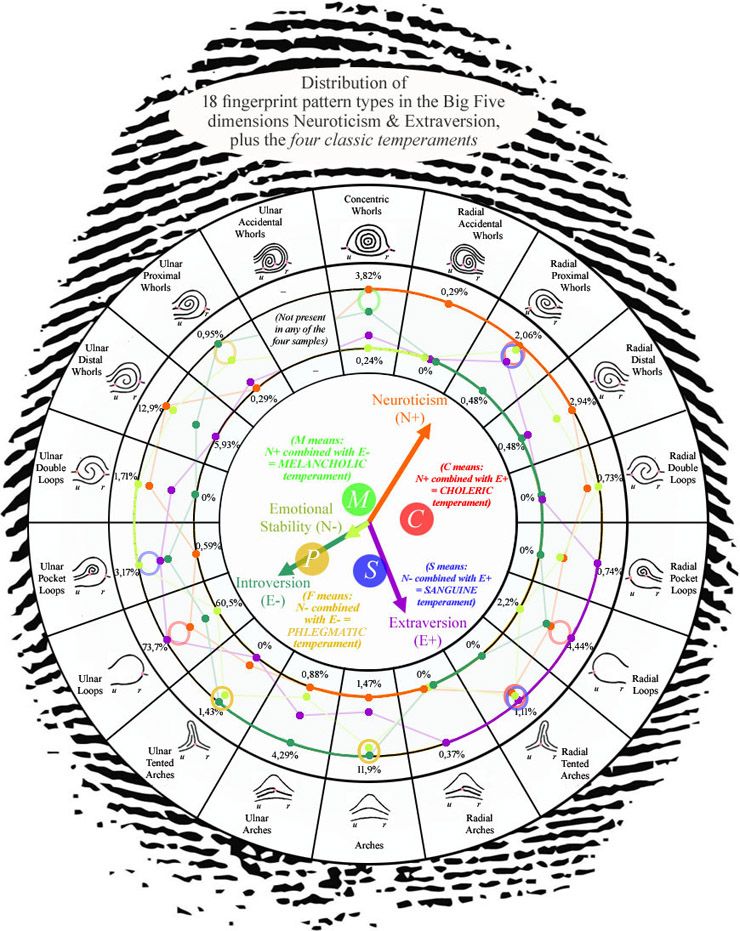 More technical job setups where specific focus or a degree of isolation is needed would, however, not be a good fit.
More technical job setups where specific focus or a degree of isolation is needed would, however, not be a good fit.
A candidate who shows high agreeableness would suit a role where personal skills and an ability to be at the service of others are needed. Of course, the opposite would be bad in a strong team environment and cause significant issues in order to work towards a common goal or task.
Finally, a candidate who exhibits high neuroticism will not be suited to a role where there are consistent changes, tasks that require strong self-starter tendencies or high stress levels. Those with low neuroticism scores will, however, thrive in these kinds of workplace scenarios.
These traits help us to understand how we may behave in the future, in our workplace and under certain circumstances as. For businesses, they can identify future talent, derailers and even potential for success.
How can Thomas help you find the right person for your role?
The Thomas Workplace Personality Test covers areas of personality testing based on Big 5 theory.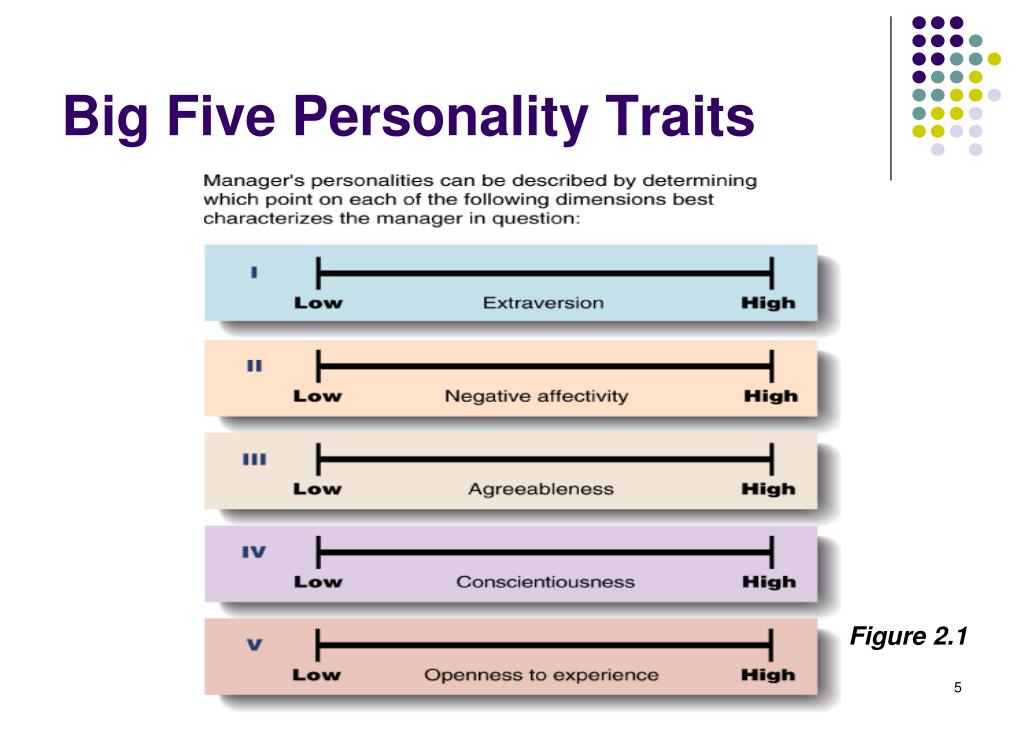 Also known as the High Potential Trait Indicator (or HPTI), it provides valuable insight into a person's strengths and potential derailers, including their leadership potential.
Also known as the High Potential Trait Indicator (or HPTI), it provides valuable insight into a person's strengths and potential derailers, including their leadership potential.
Developed by Ian MacRae and Adrian Furnham in 2006, the HPTI has been designed based on an ‘optimality’ model, which assumes that personality traits can be considered ‘optimal’ based on the requirements of a particular job role or position, such as senior executive leadership.
Based on a self-report questionnaire, the answers have 7 levels of agreement on a 1-7 Likert scale (1 ‘disagree completely’ to 7 ‘agree completely) with 78 unique items, and the test takes as little as 8 minutes to complete.
If you are interested in finding out more about how our Workplace Personality assessment can help you and your business, please speak to one of our team.
All about the "Big Five" personality traits
Many modern psychologists believe that there are five basic dimensions of personality, often referred to as the "Big Five". The five general personality traits described by the theory are extraversion, agreeableness, openness, conscientiousness, and neuroticism.
The five general personality traits described by the theory are extraversion, agreeableness, openness, conscientiousness, and neuroticism.
Trait theories have long tried to determine exactly how many personality traits there are. Earlier theories suggested a variable number of possible traits, including Gordon Allport's list of 4,000 personality traits, Raymond Cattell's 16 personality factors, and Hans Eysenck's three-factor theory. nine0003
However, many researchers felt that Cattell's theory was too complicated and Eysenck's was too limited. The result is a five-factor theory that describes the basic traits that serve as the building blocks of personality.
What is the "Big Five Dimensions of Personality"
Today, many researchers believe that there are five basic personality traits. Evidence for this theory has grown over the years, beginning with the studies of DW Fisk (1949) and later expanded by other researchers. nine0003
The Big Five is a broad category of personality traits.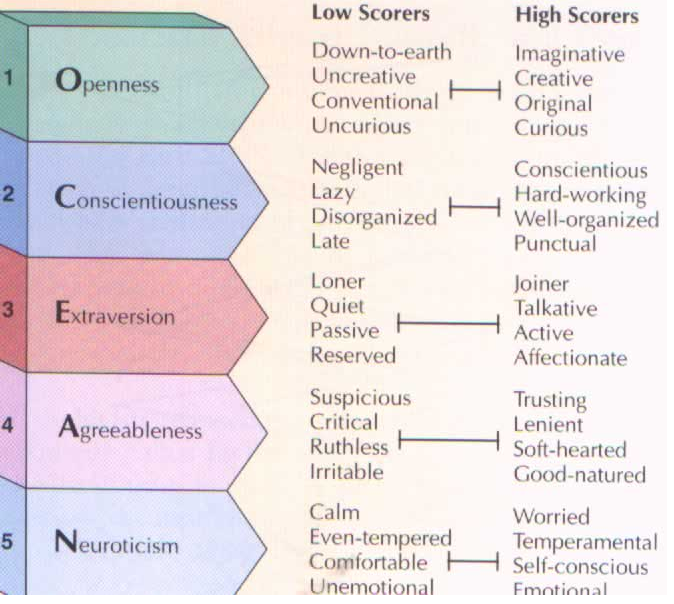 Although there is a significant amount of literature supporting this five-factor model of personality, researchers do not always agree on the exact designation of each dimension.
Although there is a significant amount of literature supporting this five-factor model of personality, researchers do not always agree on the exact designation of each dimension.
It is important to note that each of the five personality factors represents a range between two extremes. For example, extraversion is a continuum between extreme extraversion and extreme introversion. In the real world, most people are somewhere between the two polar ends of each dimension. nine0003
These five categories are usually described as follows.
Openness
This trait is characterized by such qualities as imagination and insight. People with a high level of this trait also tend to have a wide range of interests. They are curious about the world and other people, eager to learn new things and enjoy new experiences. They are also adventurous and creative. People low in this trait are often more traditional and may have difficulty with abstract thinking. nine0003
nine0003
High level
Very creative
are open to new experience
,focused on solving new problems
with pleasure think about abstract concepts
Low level
do not like the pleasure from new things
Resistant to new ideas
Not very inventive
Dislikes abstract or theoretical concepts
Consciousness
Standard characteristics of this dimension include a high level of thoughtfulness, good impulse control, and goal-oriented behavior. Highly conscientious people tend to be organized and pay attention to detail. They plan ahead, think about how their behavior affects others, and keep deadlines in mind.
High level
Spend time preparing
Finish important tasks immediately
Pay attention to details
Like to have a set schedule
Low level
Dislike structure and scheduling
Mess up and don't care about things
Don't return or put things back in place 0002
Not performing required or assigned tasks
Extraversion
Extraversion is characterized by excitability, sociability, talkativeness, assertiveness and high emotional expressiveness.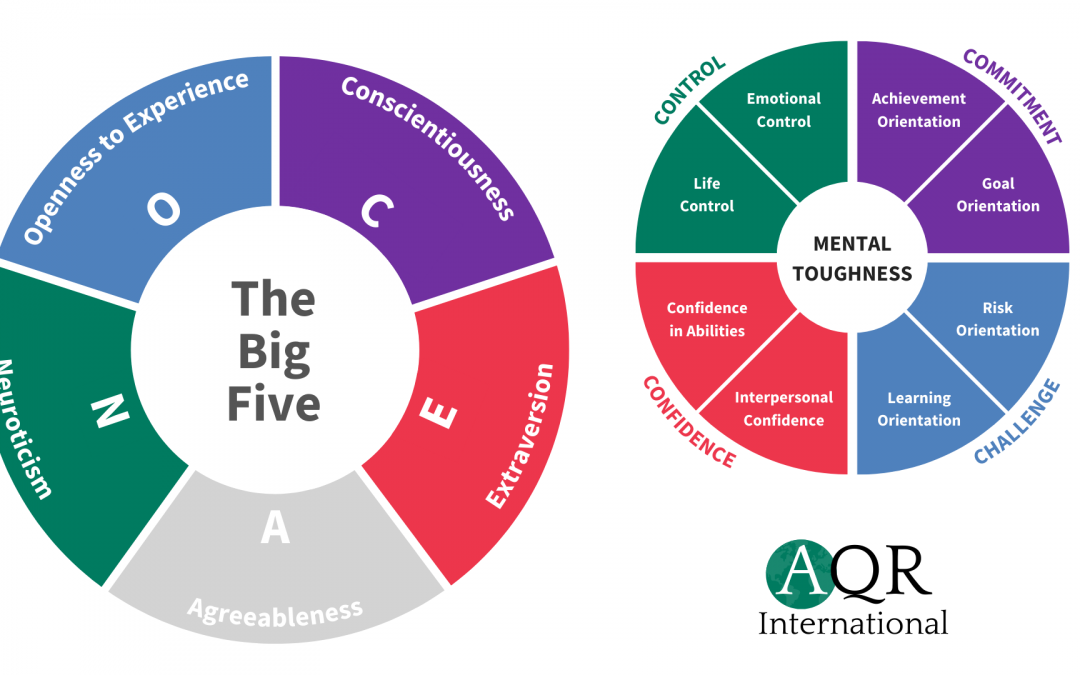 People with a high level of extraversion are outgoing and tend to get energized in social situations. Being around other people helps them feel energized and energized. nine0003
People with a high level of extraversion are outgoing and tend to get energized in social situations. Being around other people helps them feel energized and energized. nine0003
People who are low in extraversion (or introverts) tend to be more introverted and have less energy to expend in social situations. Social activities can drain them, and introverts often need a period of solitude and quiet to "recharge."
High level
Enjoy being the center of attention
Enjoy making conversation
Enjoy meeting new people
Have a wide circle of friends and acquaintances
easily find new friends
, they feel energetic surrounded by other people
at first they say, then they think
low level
prefer loneliness
, they feel fatigue when it is necessary to communicate a lot
,. like to make small talk
carefully consider the situation before speaking
do not like to be the center of attention
goodwill
This personality dimension includes qualities such as trust, altruism, kindness, affection, and other prosocial behaviors.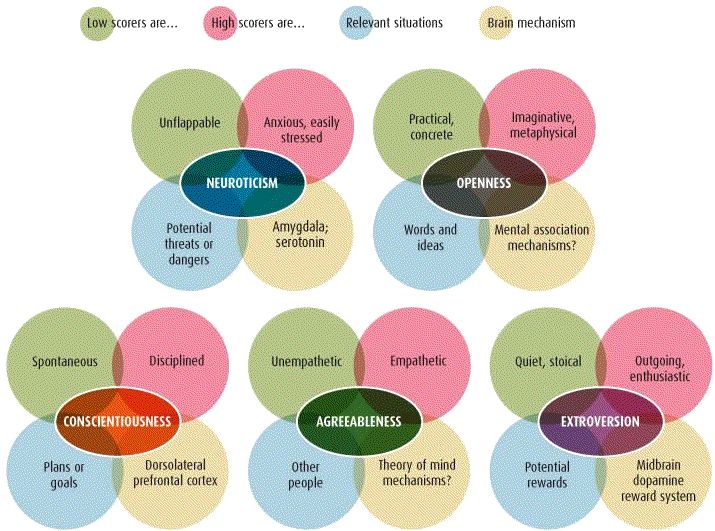 People who score high on agreeableness tend to be cooperative, while those who score low tend to be competitive and sometimes manipulative.
People who score high on agreeableness tend to be cooperative, while those who score low tend to be competitive and sometimes manipulative.
High level
Show great interest in other people
Care for others
Empathize with other people
Happy to help and contribute to the happiness of others
Help other people in need of help
Low level
Show little interest in others
Do not care how other people feel
Have little interest in other people's problems
Insult and belittle others
Manipulate others to get what they want
Neuroticism
Neuroticism is a trait characterized by sadness, sullenness and emotional instability. People with high levels of this trait tend to experience mood swings, anxiety, irritability, and sadness. People with low levels tend to be more stable and emotionally stable. nine0003
High level
experience strong stress
worry about many things
,easily upset
experience harsh mood swings
They feel anxiety
HOUSELY RETUME ALREADY
low level
Emotion 9000.
Cope well with stress
Rarely feel sad or depressed
Not anxious
Very relaxed
Always remember that behavior involves an interaction between a person's personality and situational variables. The situation in which a person finds himself plays an important role in how he reacts. However, in most cases, people act in accordance with their basic personality characteristics.
These dimensions represent broad areas of the personality. Studies have shown that these groups of characteristics tend to occur together in many people. For example, outgoing people tend to be talkative. However, these traits do not always appear together. Personality is complex and varied, and each person can exhibit behavior along several of these dimensions. nine0003
Why Big Five personality traits matter
Big Five traits are usually assessed using one of several questionnaires. Although these tests differ in the exact terms they use for each characteristic, they essentially cover the same broad dimensions, giving high or low scores for each: openness to experience (also called open-mindedness or simply openness), conscientiousness , extraversion (the flip side of this is introversion), complaisance and neuroticism (sometimes negative emotionality or emotional stability).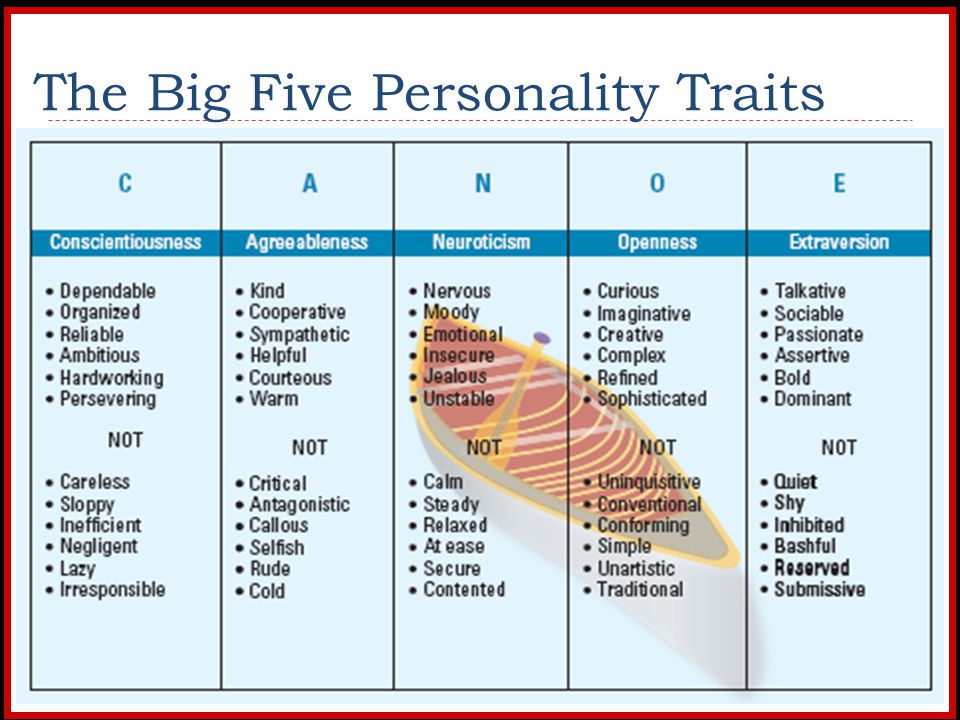 nine0003
nine0003
One of the tests, the latest version of the Big Five, asks how much a person agrees or disagrees that he or she is someone who illustrates various specific statements such as:
- "Interested in many different things" (for being open or open-mindedness)
- "Systematic, likes to keep in order" (for conscientiousness)
- "Sociable, sociable" (for extraversion)
- "Compassionate, has a soft heart" (for compliance)
- "Cranky, has mood swings" (from neuroticism or negative emotionality)
Based on a person's scores on dozens of these statements (or less on other tests), an average score for each of the five characteristics can be calculated.
What does your Big Five score tell you?
The scores on the Big Five questionnaire give an indication of how low or high a person scores on a continuum for each characteristic. Comparing these scores to a large sample of test takers—as some online tests do—gives you an idea of how open, conscientious, extroverted (or introverted), agreeable, and neurotic a person is compared to others.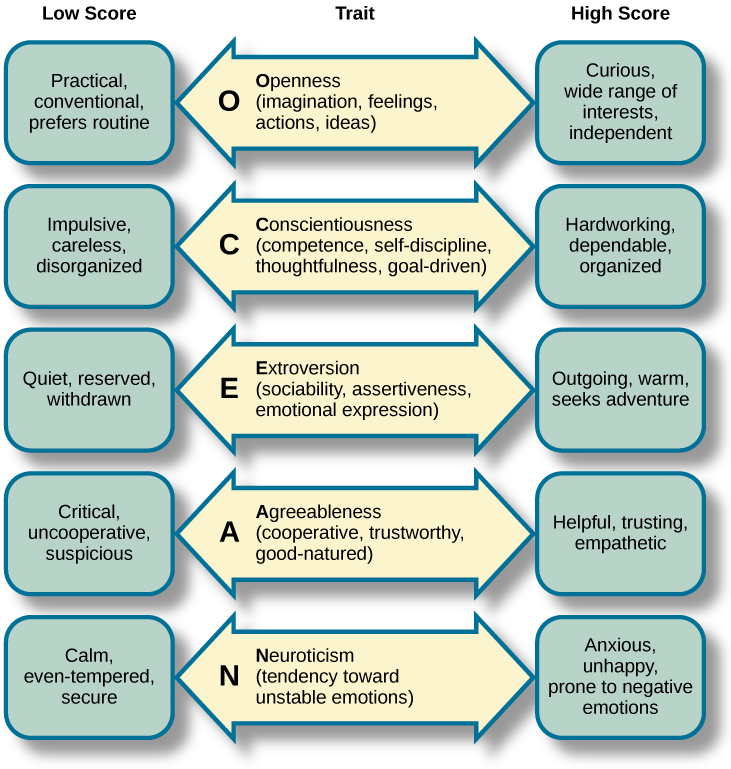 nine0003
nine0003
How were the traits of the Big Five determined?
In analyzing English words used to describe personality traits, psychologists used statistical methods to identify clusters of related characteristics. This has resulted in a small number of overarching characteristics that personality psychologists have scientifically tested on large samples of the population.
Who developed the personality traits of the Big Five?
The "Big Five" were not defined by one person - they are rooted in the work of various psychologists going back to 1930s. In 1961, Ernest Tupes and Raymond Krystal identified five personality factors that others would analyze and rename. Lewis Goldberg used the term "Big Five" in 1981 to describe these common factors.
Do the Big Five tests measure more specific traits?
Some of the Big Five questionnaires break down the five core characteristics into smaller sub-components or "aspects" that are correlated with each other but can be measured independently.